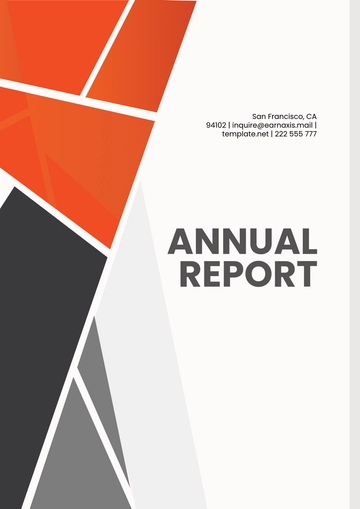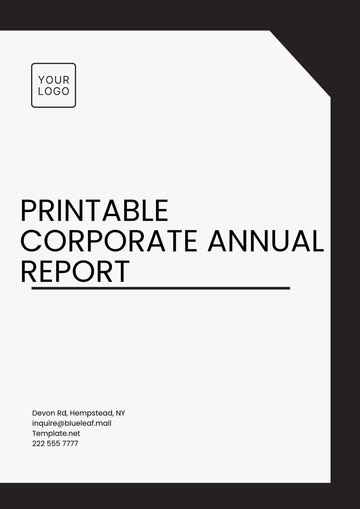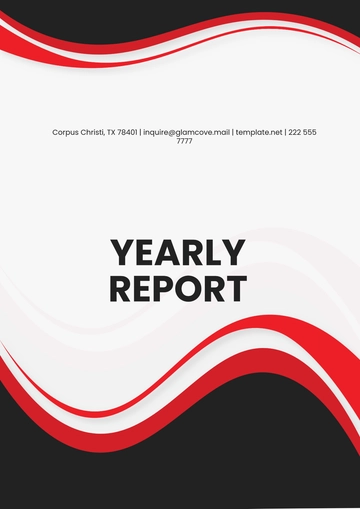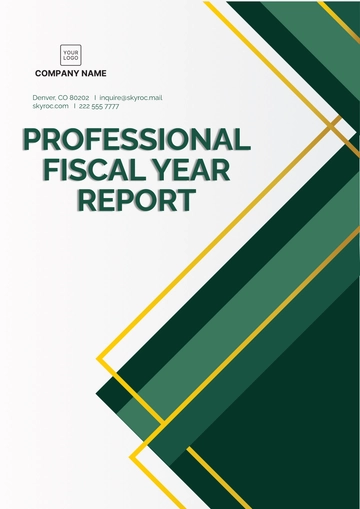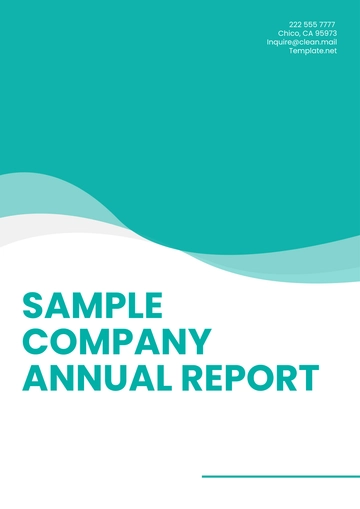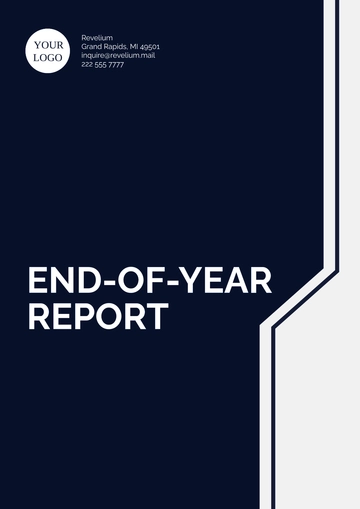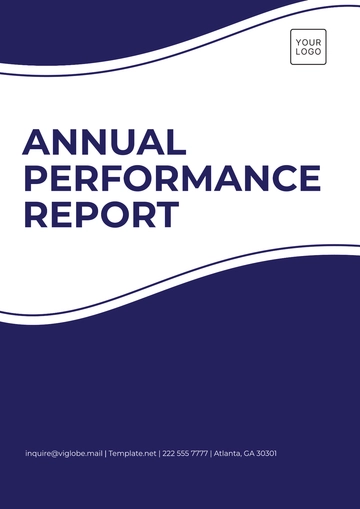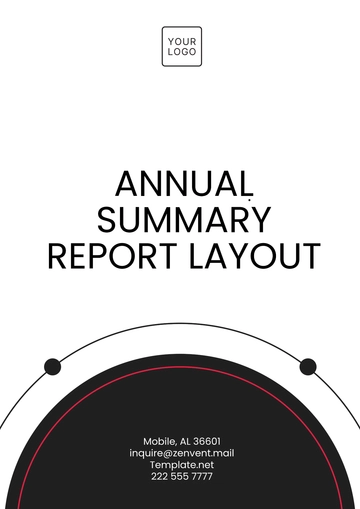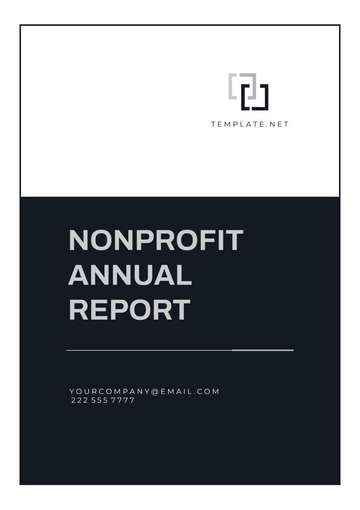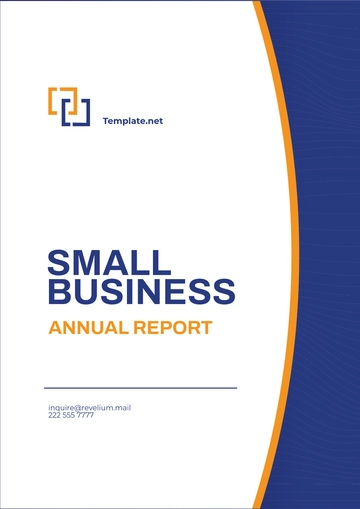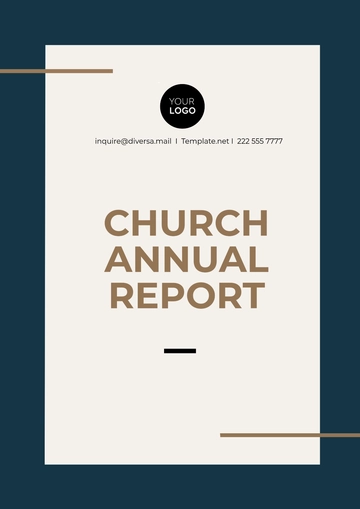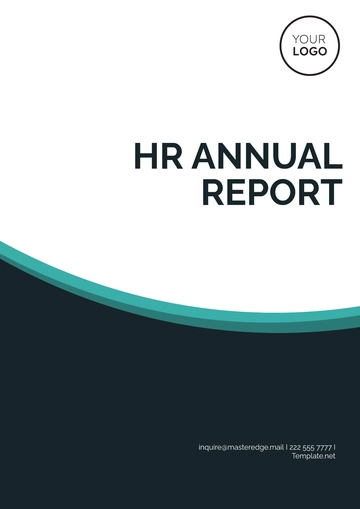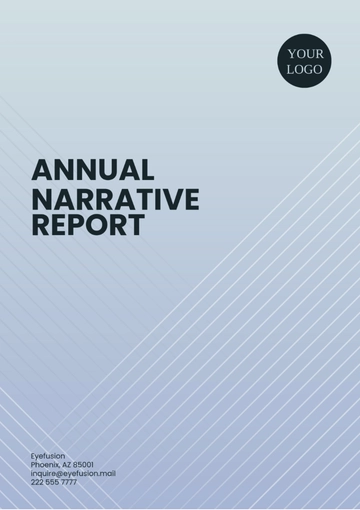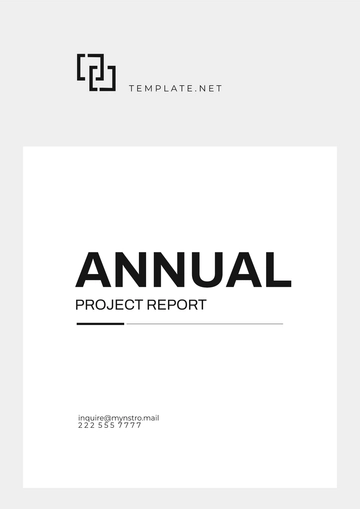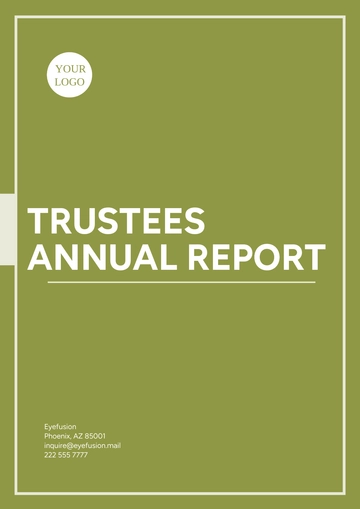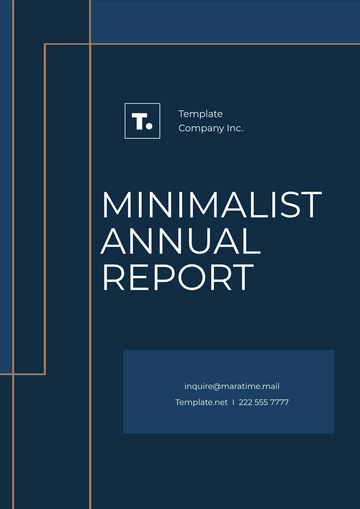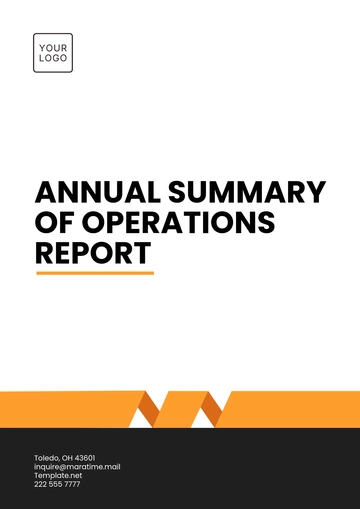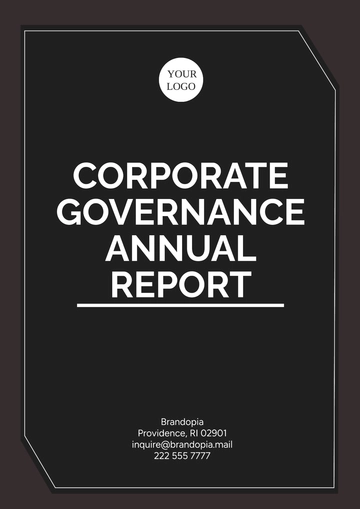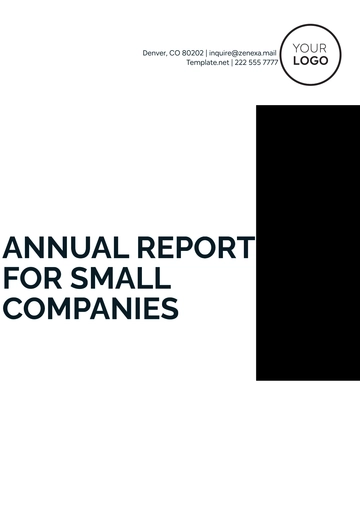Free Administration Corporate Governance Report
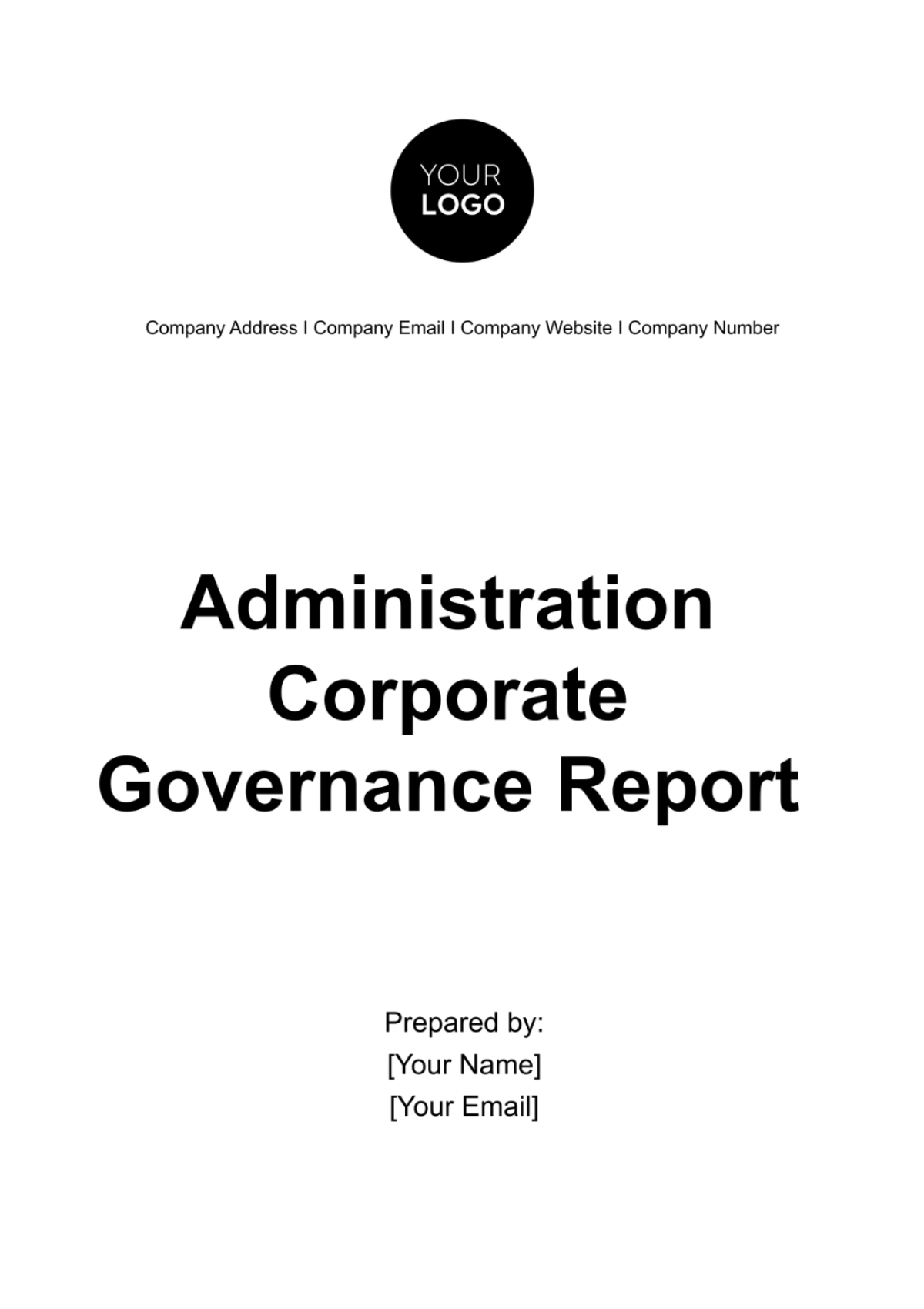
1. Executive Summary
1.1 Overview of Corporate Governance Framework
At [Your Company Name], our corporate governance framework is designed to ensure transparency, accountability, and ethical business practices across all levels of our organization. Grounded in our core values of integrity, excellence, and innovation, our governance structure is built to oversee the company's direction, ensure its compliance with legal and ethical standards, and safeguard the interests of our stakeholders.
1.2 Key Governance Highlights of the Reporting Period
The past year has been significant for [Your Company Name], with several key governance highlights:
Implementation of a new, comprehensive risk management framework to better identify, assess, and mitigate business risks.
Enhancement of our shareholder engagement processes, resulting in a [Percentage] increase in participation at our Annual General Meeting (AGM).
Introduction of a sustainability and corporate responsibility initiative, aligning our business operations with environmental and social governance (ESG) criteria.
2. Governance Structure and Leadership
2.1 Board of Directors
Composition, Roles, and Responsibilities
Our Board of Directors consists of 10 members, [Percentage] of whom are independent directors. The Board oversees the company's strategic direction, ensures financial accountability, and monitors executive management. The roles and responsibilities of the Board are clearly defined in the company's governance charter, accessible on our corporate website.
2.1.1 Board Diversity and Expertise
The diversity and expertise of our Board members are critical to our success. Our Board includes members with backgrounds in technology, finance, marketing, and sustainability, ensuring a wide range of perspectives in decision-making processes. Below is a brief overview of our Board composition:
Name | Position | Background |
|---|---|---|
[Name] | Chairman | Technology, Founder |
[Name] | Independent Director | Finance, CFO Experience |
[Name] | Independent Director | Marketing, Former CEO |
[Name] | Director | Sustainability Expert |
2.1.2 Board Changes
This year, we welcomed two new independent directors, enhancing our Board's diversity and expertise, particularly in the areas of ESG and digital transformation.
2.2 Executive Leadership Team
Our Executive Leadership Team, led by CEO [Name], comprises leaders from key functional areas, including finance, operations, technology, and human resources. Each member brings a wealth of experience and a commitment to excellence in their respective domains.
2.3 Committees and Their Functions
Our Board has established several committees to support its work, including:
Committee | Functions |
|---|---|
Audit Committee | Oversees the company's financial reporting process, internal controls, and compliance with legal and regulatory requirements. |
Risk Management Committee | Identifies and evaluates business risks and recommends appropriate mitigation strategies. |
Compensation Committee | Determines compensation for executive management and monitors the company's compensation policies. |
3. Governance Policies and Practices
3.1 Ethical Standards and Compliance
[Your Company Name] is committed to maintaining the highest standards of ethics and compliance. Our Code of Ethics outlines the principles that guide our business conduct, including integrity, fairness, and respect. All employees are required to complete annual training on our Code of Ethics and compliance policies.
3.2 Risk Management
At our company, we have in place a carefully designed risk management framework. This sophisticated framework specifically crafted focuses on identifying, assessing, and actively mitigating any potential risks that might pose a threat to the primary objectives of our business. We understand the fluidity and dynamics of business environment and risk factors, thus our established risk management framework isn't static. We ensure that it undergoes regular reviews and consequent updates as and when necessary. Such reviews and updates are aimed at effectively mirroring changes and developments that occur in our business environment and in the overall risk panorama.
4. Board Performance and Evaluation
In the pursuit of excellence in governance, [Your Company Name] places significant emphasis on the performance and evaluation of our Board of Directors. Over the past year, we have instituted a comprehensive board evaluation process aimed at assessing the effectiveness of the Board as a whole, as well as the contribution of each individual director. This evaluation is conducted annually and is facilitated by an independent external consultant to ensure objectivity. The process includes a combination of questionnaires, interviews, and performance data analysis. The criteria for evaluation encompass a range of factors, including strategic oversight, financial stewardship, risk management, and the Board's ability to provide constructive guidance to the executive management team.
The results of this evaluation highlight the Board's strengths, such as its strategic vision and financial oversight, while also identifying areas for improvement, particularly in enhancing diversity and inclusion within its composition and increasing its engagement with sustainability issues. In response, we have initiated targeted training programs for our directors, focusing on emerging trends in corporate governance, environmental and social governance (ESG) criteria, and digital transformation. Additionally, we have begun the process of broadening our search for new board members to include a wider range of backgrounds and expertise.
5. Remuneration and Compensation
The remuneration and compensation framework at [Your Company Name] is designed to attract, motivate, and retain the talent necessary to achieve our strategic objectives while ensuring alignment with the long-term interests of our shareholders. Our Executive Compensation Policy is overseen by the Compensation Committee, which benchmarks our compensation packages against industry standards and adjusts them based on the company’s performance and individual contributions.
For our executive team, the compensation structure is a balanced mix of fixed salary, performance-based bonuses, and long-term incentives such as stock options. This structure is intended to reward executives for achieving short-term operational targets while also aligning their interests with the long-term value creation for shareholders. The performance metrics for bonuses include financial targets, such as revenue growth and profitability, as well as non-financial targets related to customer satisfaction, innovation, and sustainability initiatives.
Non-executive directors receive a fixed remuneration that reflects their time commitment, expertise, and the responsibilities of their roles on the Board and its committees. Unlike executives, their compensation does not include performance-based bonuses or stock options, to maintain the independence of their oversight function.
In the past fiscal year, the total compensation for our executive leadership saw an average increase of [Percentage], in line with the company's financial performance and market benchmarks. The detailed breakdown of remuneration for key executives and non-executive directors is disclosed in our annual report, reinforcing our commitment to transparency and accountability in governance practices.
6. Shareholder Rights and Responsibilities
6.1 Voting Rights
At [Your Company Name], we firmly believe in the importance of shareholder participation in corporate governance. Each shareholder is entitled to one vote per share owned at our Annual General Meeting (AGM) and any special meetings convened. Voting can be conducted in person at the meeting, via proxy, or through electronic voting systems introduced this year to increase participation.
6.2 Shareholder Meetings
Our AGM is held annually in [Month], with the exact date, time, and venue disclosed in our annual report and on our website at least 30 days prior to the meeting. Special meetings may be convened as necessary. The agenda for these meetings includes reviewing the company's financial performance, electing board members, and discussing shareholder proposals. In the past year, we've introduced a Q&A session to enhance dialogue between the board and our shareholders.
6.3 Dividend Policy
Our dividend policy is designed to provide shareholders with a steady income while retaining sufficient funds in the company for future growth. The board aims to distribute up to [Percentage] of our net profits after tax as dividends, subject to the company's financial performance and future investment needs. Dividend payments are made quarterly, with the board reserving the right to adjust the policy as needed.
7. Transparency and Reporting
7.1 Financial Reporting
[Your Company Name] adheres to the highest standards of financial transparency and integrity. Our financial reports are prepared in accordance with International Financial Reporting Standards (IFRS) and audited by an independent external auditor. Quarterly financial statements are published on our website and filed with regulatory authorities.
7.2 Non-Financial Reporting
Beyond financial metrics, we are committed to reporting on environmental, social, and governance (ESG) factors that impact our business and stakeholders. Our annual sustainability report outlines our performance in areas such as environmental impact, social responsibility, and ethical governance, providing a comprehensive view of our commitment to sustainable business practices.
7.3 Audit and Assurance
The Audit Committee oversees the integrity of our financial reporting process and the independence and performance of our internal and external auditors. An annual audit is conducted by an independent firm, with findings reported to the Audit Committee and summarized in our annual report.
8. Challenges and Future Directions
8.1 Governance Challenges
The past year presented several governance challenges, including adapting to new regulatory requirements and managing the risks associated with our digital transformation efforts. Through proactive management and strategic planning, we have been able to address these challenges effectively.
8.2 Strategic Initiatives for Governance Improvement
Looking ahead, we are focused on further enhancing our governance framework by implementing advanced data analytics for risk management, expanding our sustainability initiatives, and increasing shareholder engagement through innovative digital platforms.
9. Conclusion
9.1 Summary of Key Points
This Administration Corporate Governance Report has outlined [Your Company Name]'s commitment to high standards of corporate governance. Through our structured governance framework, ethical standards, transparent reporting, and proactive management of challenges, we strive to uphold the principles of accountability, fairness, and transparency in all our business practices.
9.2 Commitment Statement
[Your Company Name] is dedicated to continuous improvement in our governance practices. We are committed to acting in the best interests of our shareholders, employees, customers, and the communities in which we operate. As we move forward, we will continue to adapt, innovate, and uphold our commitment to excellence in governance, ensuring the long-term success and sustainability of our company.
- 100% Customizable, free editor
- Access 1 Million+ Templates, photo’s & graphics
- Download or share as a template
- Click and replace photos, graphics, text, backgrounds
- Resize, crop, AI write & more
- Access advanced editor
Streamline your reporting process with Template.net's Administration Corporate Governance Report Template. This customizable and editable solution, powered by our Ai Editor Tool, simplifies the creation of comprehensive governance reports. Ensure transparency, accountability, and compliance effortlessly, enhancing your corporate governance standards. Ideal for any organization looking to improve its reporting efficiency and quality.
You may also like
- Sales Report
- Daily Report
- Project Report
- Business Report
- Weekly Report
- Incident Report
- Annual Report
- Report Layout
- Report Design
- Progress Report
- Marketing Report
- Company Report
- Monthly Report
- Audit Report
- Status Report
- School Report
- Reports Hr
- Management Report
- Project Status Report
- Handover Report
- Health And Safety Report
- Restaurant Report
- Construction Report
- Research Report
- Evaluation Report
- Investigation Report
- Employee Report
- Advertising Report
- Weekly Status Report
- Project Management Report
- Finance Report
- Service Report
- Technical Report
- Meeting Report
- Quarterly Report
- Inspection Report
- Medical Report
- Test Report
- Summary Report
- Inventory Report
- Valuation Report
- Operations Report
- Payroll Report
- Training Report
- Job Report
- Case Report
- Performance Report
- Board Report
- Internal Audit Report
- Student Report
- Monthly Management Report
- Small Business Report
- Accident Report
- Call Center Report
- Activity Report
- IT and Software Report
- Internship Report
- Visit Report
- Product Report
- Book Report
- Property Report
- Recruitment Report
- University Report
- Event Report
- SEO Report
- Conference Report
- Narrative Report
- Nursing Home Report
- Preschool Report
- Call Report
- Customer Report
- Employee Incident Report
- Accomplishment Report
- Social Media Report
- Work From Home Report
- Security Report
- Damage Report
- Quality Report
- Internal Report
- Nurse Report
- Real Estate Report
- Hotel Report
- Equipment Report
- Credit Report
- Field Report
- Non Profit Report
- Maintenance Report
- News Report
- Survey Report
- Executive Report
- Law Firm Report
- Advertising Agency Report
- Interior Design Report
- Travel Agency Report
- Stock Report
- Salon Report
- Bug Report
- Workplace Report
- Action Report
- Investor Report
- Cleaning Services Report
- Consulting Report
- Freelancer Report
- Site Visit Report
- Trip Report
- Classroom Observation Report
- Vehicle Report
- Final Report
- Software Report
